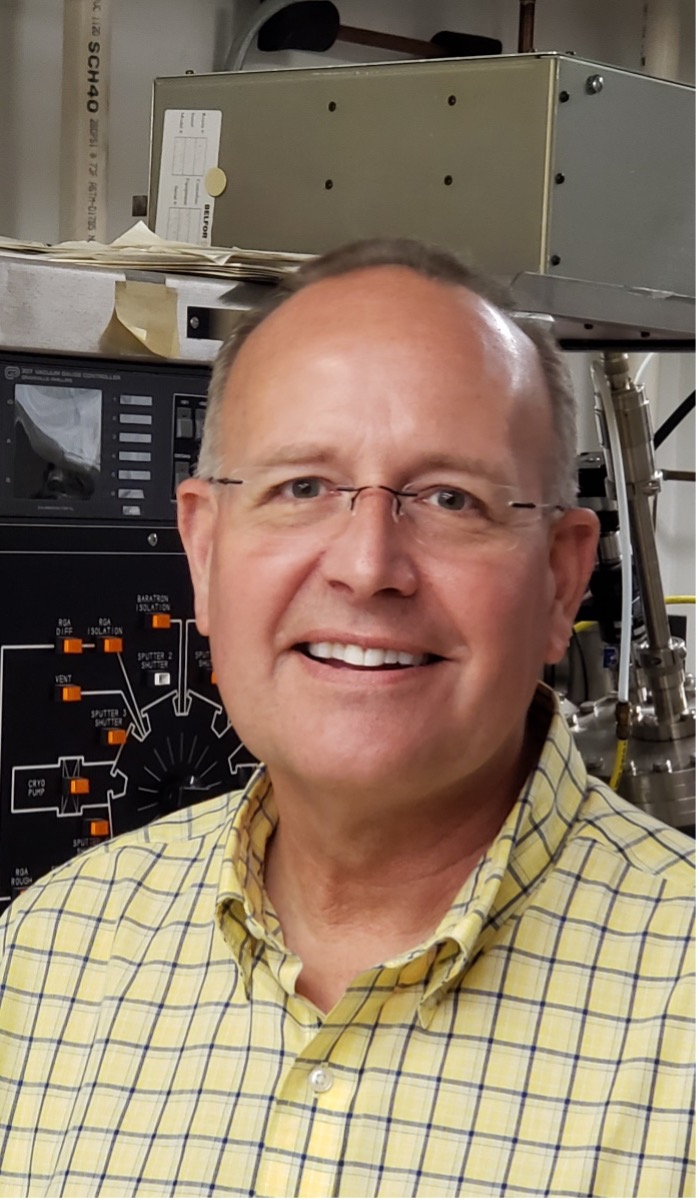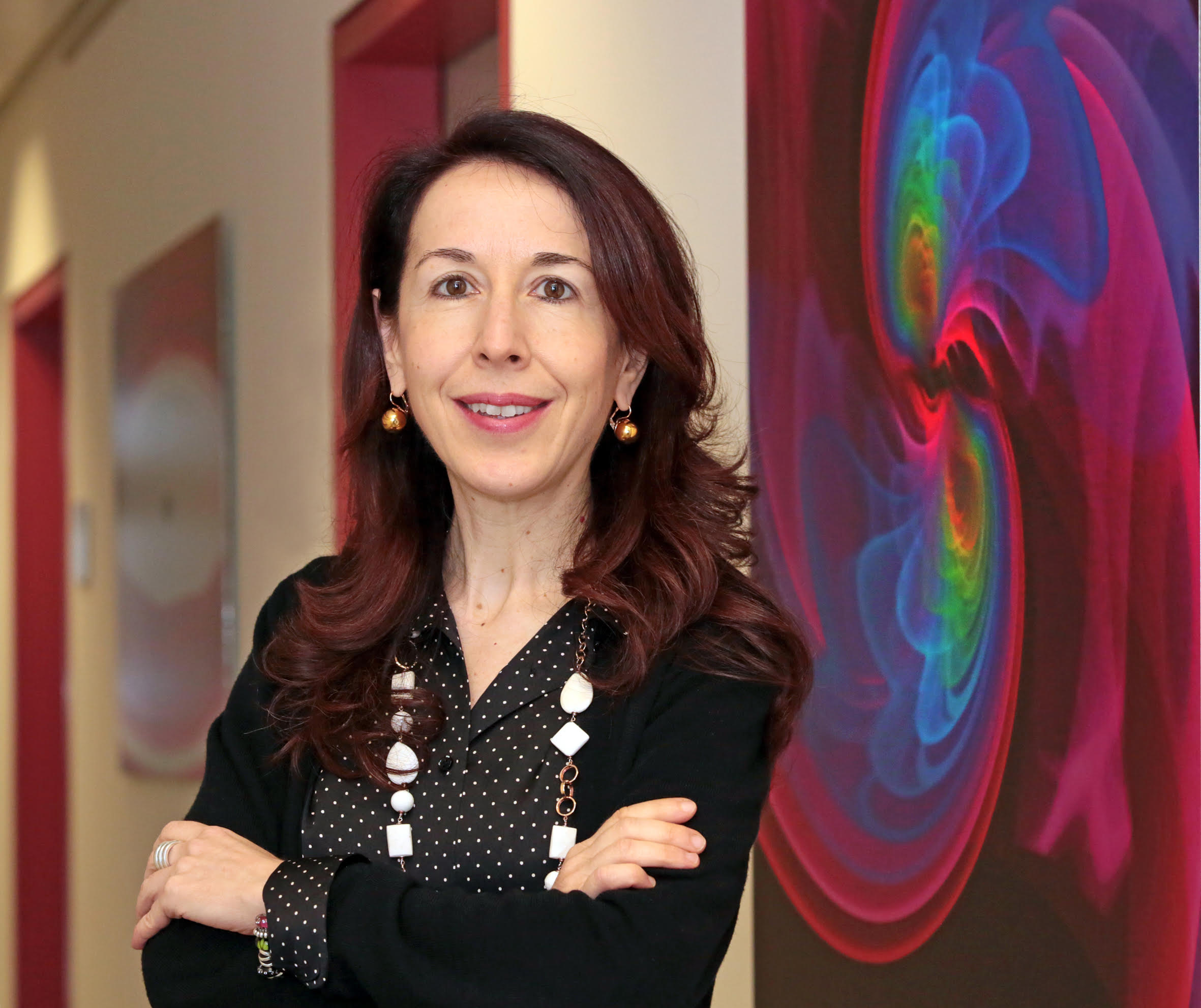- Details
-
Category: Department News
-
Published: Tuesday, September 07 2021 00:11
 Doug BensenWhen responding to an interview request for this story, Douglas Bensen (B.S. ’85, industrial education), who has worked at the University of Maryland for 35 years, warned that he might be a boring subject. His title on the Department of Physics website is the generic “coordinator” after all.
Doug BensenWhen responding to an interview request for this story, Douglas Bensen (B.S. ’85, industrial education), who has worked at the University of Maryland for 35 years, warned that he might be a boring subject. His title on the Department of Physics website is the generic “coordinator” after all.
But when speaking to those who have benefited directly from Bensen’s expertise, it becomes apparent that “coordinator” in this case stands for “The Person that Makes Things Work.”
“If something breaks, I text Doug, and I know the problem is going to be gone,” said Sam Deitemyer, a physics graduate student at UMD who works in the Quantum Materials Center (QMC).
Deitemyer’s experience is typical for graduate students working in QMC labs. Through the years, whenever something has gone wrong, something needed maintenance or a new piece of equipment needed to be installed, Bensen has been there making things work and sharing his knowledge along the way.
“It's really great when Doug's there fixing something,” Deitemyer said. “I mean, it's always bad when things break, but it's a good learning opportunity for me. I've gotten to learn how to do a lot of stuff myself, because Doug’s not just good at fixing stuff, he's good at teaching people while he's doing it.”
It’s Bensen’s brand of boring—being quietly consistent and under-the-radar indispensable—that earned him the Dean’s Outstanding Employee Award from UMD’s College of Computer, Mathematical, and Natural Sciences in spring 2021. The students Bensen helped were looking for a way to give back, and the idea of nominating Bensen for the Dean’s award caught on, thanks to Deitmeyer.
“I don't know the total number of nominations,” Deitmeyer said, “but I know he helped me and helps everyone that I know in this building.”
Bensen cultivated his penchant for fixing things from an early age. When he was nine years old, soon after his family moved to Maryland, he started taking apart and rebuilding lawn mowers and go-karts.
“I learned a lot of things on my own—how to weld, how to restore and paint cars, and all the mechanics that go with bringing them back to life,” Bensen said. “Really, you learn how to do things if you want to play. And my dad was very supportive, making sure I was always having fun. His attitude was, ‘Here are some tools, don't kill yourself.’”
When Bensen started college at UMD in 1982, he was planning to become an Earth science teacher. But, like many college students, Bensen struggled during his first semester. Looking for classes that were more in his wheelhouse, he stumbled into an industrial education program and found his stride.
“We had welding, we had foundry, we had machine shop, we had plastics technology, we had metallurgy. We had a lot of classes that were very hands on,” Bensen said. “For somebody like me who's been building go-karts and different cars since I was a little guy, it felt like, ‘How can this be school?’”
After graduation, Bensen took a job with the UMD High Energy Physics group.
“One of the guys I studied with had a part-time job working for High Energy Physics on campus,” Bensen said. “He said to me, ‘If you’re looking for something to do, a job until you find a real job, we could use you for maybe a year, year-and-a-half.’”
Thirty-five years later, Bensen said he’s still waiting on that real job, but he has no regrets.
“UMD is like a small little community,” he said. “The environment here is incredibly comfortable. You have something here that you don't have in a lot of jobs, which is freedom. If you’re not happy, you can do other things or explore other things.”
After a year with the High Energy Physics group, Bensen moved to plasma physics, working in the machine shop and supporting the free-electron laser group and gyroklystron (a version of a klystron microwave amplification device) group in what is now the Institute for Research in Electronics and Applied Physics (IREAP). In 1991, he moved to the Center for Superconductivity Research, and has remained there, watching it transform into the Center for Nanophysics and Advanced Materials and now the QMC.
In describing his office, Bensen said it’s perpetually in a state best described by the phrase “There appears to have been a struggle.” It’s littered with tools and old parts for equipment in and out of use. Some of those parts can’t be replaced because they haven’t been manufactured in over a decade. Bensen revels in making equipment run long past its intended lifespan, even collecting dilution refrigerators that other institutions decide are too old to maintain. He said that tidying up the office would force him to get rid of things that may still be of use, and, in any case, it’s an organized kind of chaos.
“I had a professor come in to look for a vacuum flange,” Bensen recalled, “and I just kind of reach down and ask, ‘How many do you need?’ And he says, ‘How did you know where they were?’ And it’s because that’s where they were 10 years ago. Why would they move?”
Even more than making things work and reviving old equipment, Bensen derives joy from watching students learn and grow. In a sense, his original wish to become a teacher has come true. Whenever a graduate student asks for help with an issue, Bensen approaches it as a chance to figure something out together, teaching the students not only the ins and outs of the apparatus, but also how to diagnose the problem and figure things out for themselves.
“I’m kind of boring,” Bensen repeated. “I just really like working with the students. Working with them and helping them and seeing them get it. When their stuff works again and they can start collecting data, my life is good.”
Even after graduating and leaving QMC, many students still reach out to Bensen for help.
“I'm like a resource,” he said. “‘Where'd you get this, where'd you get that, where'd you find these parts?’ Just because you leave doesn't mean you're gone. And I'm always here.”
Deitemyer and some of the other students who nominated Bensen for the Dean’s Outstanding Employee Award have made him promise he won’t retire until they graduate. So at least for the next few years, QMC can continue to count on Bensen’s boringly consistent behind-the-scenes excellence.
Written by Dina Genkina

